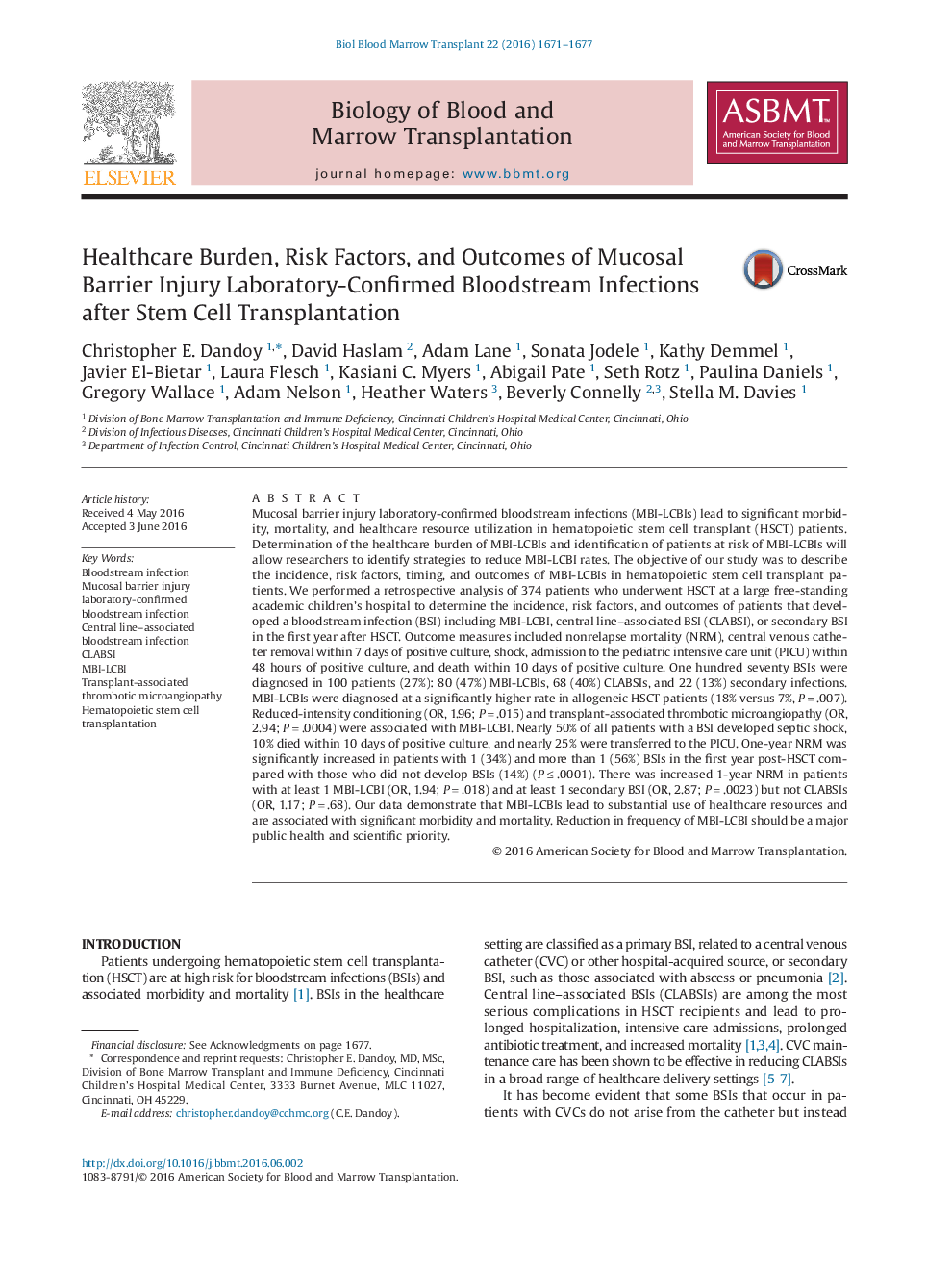| کد مقاله | کد نشریه | سال انتشار | مقاله انگلیسی | نسخه تمام متن |
|---|---|---|---|---|
| 2101287 | 1546250 | 2016 | 7 صفحه PDF | دانلود رایگان |
• Mucosal barrier injury laboratory-confirmed bloodstream infections lead to significant morbidity, mortality, and healthcare resource utilization in hematopoietic stem cell transplant patients.
• Mucosal barrier injury laboratory-confirmed bloodstream infections are associated with increased 1-year nonrelapse mortality after stem cell transplantation.
• Patients undergoing allogeneic stem cell transplantation develop mucosal barrier injury laboratory-confirmed bloodstream infections at a much higher rate than those undergoing autologous stem cell transplantation.
Mucosal barrier injury laboratory-confirmed bloodstream infections (MBI-LCBIs) lead to significant morbidity, mortality, and healthcare resource utilization in hematopoietic stem cell transplant (HSCT) patients. Determination of the healthcare burden of MBI-LCBIs and identification of patients at risk of MBI-LCBIs will allow researchers to identify strategies to reduce MBI-LCBI rates. The objective of our study was to describe the incidence, risk factors, timing, and outcomes of MBI-LCBIs in hematopoietic stem cell transplant patients. We performed a retrospective analysis of 374 patients who underwent HSCT at a large free-standing academic children's hospital to determine the incidence, risk factors, and outcomes of patients that developed a bloodstream infection (BSI) including MBI-LCBI, central line–associated BSI (CLABSI), or secondary BSI in the first year after HSCT. Outcome measures included nonrelapse mortality (NRM), central venous catheter removal within 7 days of positive culture, shock, admission to the pediatric intensive care unit (PICU) within 48 hours of positive culture, and death within 10 days of positive culture. One hundred seventy BSIs were diagnosed in 100 patients (27%): 80 (47%) MBI-LCBIs, 68 (40%) CLABSIs, and 22 (13%) secondary infections. MBI-LCBIs were diagnosed at a significantly higher rate in allogeneic HSCT patients (18% versus 7%, P = .007). Reduced-intensity conditioning (OR, 1.96; P = .015) and transplant-associated thrombotic microangiopathy (OR, 2.94; P = .0004) were associated with MBI-LCBI. Nearly 50% of all patients with a BSI developed septic shock, 10% died within 10 days of positive culture, and nearly 25% were transferred to the PICU. One-year NRM was significantly increased in patients with 1 (34%) and more than 1 (56%) BSIs in the first year post-HSCT compared with those who did not develop BSIs (14%) (P ≤ .0001). There was increased 1-year NRM in patients with at least 1 MBI-LCBI (OR, 1.94; P = .018) and at least 1 secondary BSI (OR, 2.87; P = .0023) but not CLABSIs (OR, 1.17; P = .68). Our data demonstrate that MBI-LCBIs lead to substantial use of healthcare resources and are associated with significant morbidity and mortality. Reduction in frequency of MBI-LCBI should be a major public health and scientific priority.
Journal: - Volume 22, Issue 9, September 2016, Pages 1671–1677
